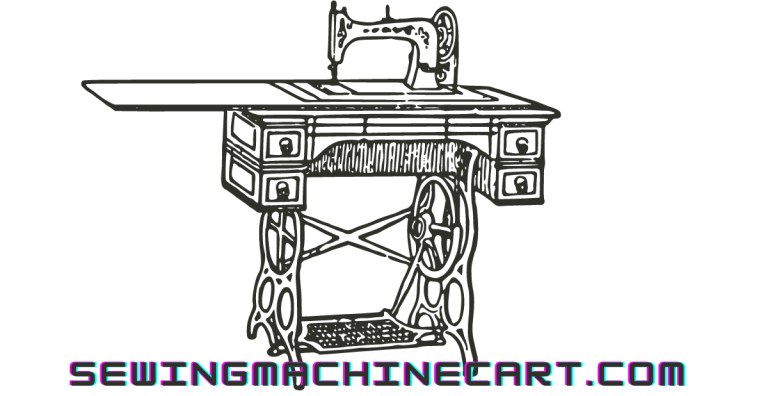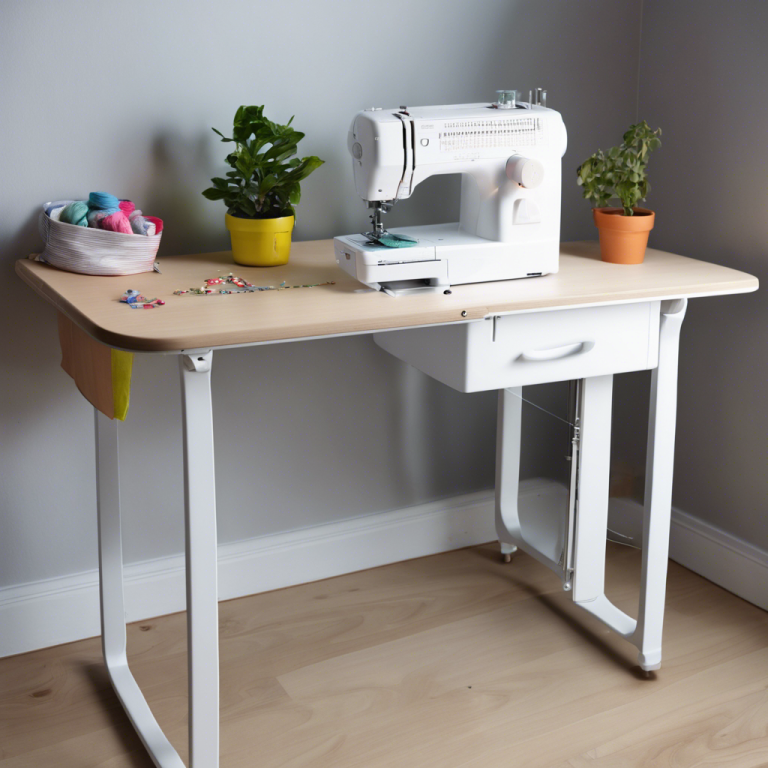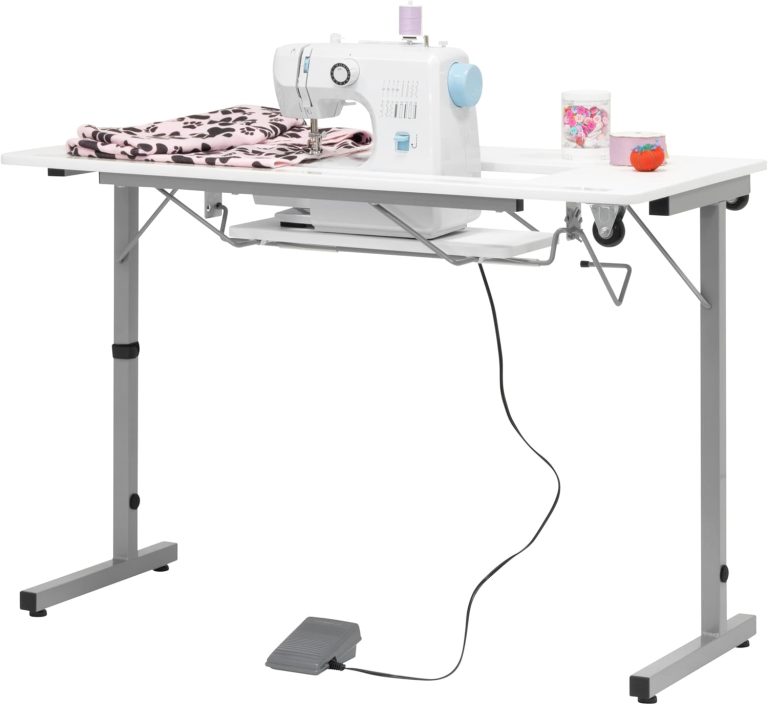10 Must-Have Pieces of Sewing Room Furniture for Every Enthusiast
Introduction
Creating an organized sewing space is crucial for any sewing enthusiast. Having the right sewing room furniture can make a significant difference in productivity and enjoyment. Essential furniture pieces not only keep your supplies neatly stored but also provide dedicated areas for specific tasks, ensuring each project runs smoothly.
A dedicated sewing area brings many benefits, including increased focus and reduced time spent searching for materials. By investing in the right pieces of furniture, you can transform any space into a functional and inspiring sewing room.
1. Large Cabinets and Closets
Having ample fabric storage solutions is crucial for any sewing room. Large cabinets and closets provide the perfect place to store your fabric, threads, notions, and other supplies, ensuring everything has a designated spot.
Benefits of Using Large Cabinets and Closets
- Storing Fabric and Supplies: A well-organized cabinet allows you to sort your materials by type, color, or project. This makes it easier to find what you need quickly.
- Keeping the Space Organized: By dedicating specific areas for different supplies, you maintain a clean and clutter-free workspace. An organized environment boosts productivity and creativity.
- Benefits of Cabinets with Doors: Cabinets with doors help hide any mess, giving your sewing room a tidy appearance even during ongoing projects. This feature is particularly useful when you need to switch between tasks without tidying up immediately.
Investing in quality cabinets or closets can transform your sewing area into an efficient and inspiring workspace.
2. Rolling Storage Solutions
The mobility in sewing spaces provided by rolling storage solutions is a game changer for every sewing enthusiast. These versatile units allow you to keep your supplies organized while easily moving them around your workspace as needed.
Advantages of Rolling Storage:
- Flexibility: Easily transport tools and materials between different workstations.
- Accessibility: Keep frequently used items within reach without cluttering your main workspace.
- Space-saving: Ideal for small sewing rooms where fixed storage options might be impractical.
Types of Rolling Storage Options:
- Rolling Carts: Perfect for holding everything from thread spools to cutting tools. Look for carts with multiple tiers and compartments to maximize organization.
- Drawer Units on Wheels: Great for storing patterns, fabric pieces, and haberdashery items. Choose units with transparent drawers for easy visibility.
- Mobile Workstations: Combine storage with additional work surfaces. Some even feature fold-out sections or drop-leaves, providing extra space when needed.
Investing in rolling storage solutions contributes significantly to a more efficient and adaptable sewing space, ensuring that all your essential supplies are always within arm’s reach without creating unnecessary clutter.
3. Sewing Machine Table
A sewing machine table is a cornerstone in any sewing room, providing a stable surface crucial for efficient and precise work. A wobbly table can lead to uneven stitches and frustration. Therefore, investing in a sturdy table specifically designed for sewing machines is essential.
Features to Look For
- Stability: Ensure the table can withstand the vibrations of your sewing machine without shaking.
- Sewing Machine Lift Cabinet: These cabinets allow you to adjust the height of your sewing machine, making it easier to switch between free-arm and flatbed positions.
- Drop-in Feature: A drop-in feature keeps your sewing machine level with the tabletop, creating a smooth working surface.
- Storage Compartments: Integrated storage spaces for threads, needles, and other essentials keep everything within arm’s reach.
By choosing the best furniture for sewing rooms, like a well-designed sewing machine table, you enhance both comfort and productivity.
4. Cutting Table Ideas for Small Sewing Spaces
Having a dedicated cutting surface is essential for precise and efficient fabric cutting. In small sewing spaces, finding the right cutting table ideas can make all the difference.
Options for DIY Cutting Tables to Save Space:
- Drop-Leaf Tables: These tables have foldable sides that can be extended when in use and collapsed to save space when not needed.
- Counter Height Table: Opt for a taller table to avoid straining your back while cutting fabric. This also allows for additional storage underneath.
- Folding Tables: Easy to set up and store away, folding tables provide a flexible workspace solution.
- Wall-Mounted Folding Tables: Mounted on the wall, these tables can be folded down when needed and tucked away when space is limited.
- Custom-Built Solutions: Tailor-made tables designed to fit your specific space constraints and needs.
Investing in a well-designed cutting table tailored to your space ensures optimal functionality without compromising on room.
5. Comfortable Seating Options for Long Sewing Sessions
Comfort is essential during long sewing sessions. Investing in an ergonomic chair can significantly impact your productivity and overall experience in the sewing room.
Recommended Chair Features
When selecting the best chairs for sewing rooms, consider these features:
- Adjustable Height: Allows you to align your chair with the height of your sewing table, ensuring proper posture.
- Wheels: Provides mobility, making it easier to move between different workstations.
- Lumbar Support: Supports the lower back, reducing strain during extended periods of sitting.
- Swivel Base: Offers flexibility and ease of movement, allowing you to access various tools and materials without straining.
An ergonomic chair with these features helps maintain comfort and promotes good posture, essential for those long hours spent creating beautiful projects.
6. Excellent Lighting Solutions to Enhance Productivity in Sewing Rooms
Proper lighting is crucial for any sewing room. It directly impacts your ability to see fine details, match colors accurately, and avoid straining your eyes during long hours of work. Good lighting solutions can significantly enhance productivity in sewing rooms.
Types of lighting to consider:
- Natural Light:
- Benefits: Natural light provides a true representation of colors, making it easier to choose fabrics and threads.
- Ideal Setup: Position your sewing table near a window to maximize natural light during the day.
- Task Lighting:
- Importance: Task lighting focuses light exactly where you need it, such as over your sewing machine or cutting table.
- Options: Adjustable desk lamps with LED bulbs are great for detail work. Clip-on lights can also be attached to your sewing machine for precision tasks.
- Overhead Lighting:
- Purpose: Ensures the entire room is well-lit, reducing shadows and dark spots.
- Choices: Consider installing bright ceiling lights or track lighting that can be directed towards different areas of the room.
Tips for optimizing lighting:
- Combine natural and artificial light sources for balanced illumination.
- Use daylight bulbs in task lights to simulate natural light conditions.
- Consider adding dimmer switches to adjust brightness as needed.
Investing in diverse and flexible lighting solutions ensures you have optimal visibility for every aspect of your sewing projects.
7. Creative Storage Solutions for Fabric Rolls and Bolts
Organizing fabric rolls and bolts can be a daunting task. Using transparent boxes and labeled containers is an effective way to keep your fabrics visible and easily accessible. Clear storage options prevent you from endlessly searching through opaque bins, saving time and reducing frustration.
Modular shelving offers flexibility in arranging your sewing room. Shelves with adjustable heights can accommodate rolls of different sizes, maximizing your space efficiently.
Benefits of Storage Solutions
Here are the benefits of each storage solution:
- Transparent Boxes: Easy visibility, quick access
- Labeled Containers: Organized categorization, faster retrieval
- Modular Shelving: Customizable, space-efficient
Examples of Storage Solutions
Here are some examples of each storage solution:
- Clear plastic bins or acrylic boxes for transparent boxes
- Labeling by fabric type or color for labeled containers
- Adjustable shelves, pull-out baskets for modular shelving
Investing in these creative storage solutions for fabric rolls and bolts enhances both the functionality and the aesthetic of your sewing space.
8. Designated Pressing Space with an Ironing Board Setup that Fits Your Needs
Creating a designated pressing space with an ironing board setup that fits your needs is crucial for efficient sewing. A well-organized pressing area ensures that your fabric pieces are properly pressed, leading to more precise and professional results.
Importance of Having an Iron and Ironing Board Area
Having a specific spot for your iron and ironing board:
- Enhances workflow by reducing time spent setting up.
- Keeps the ironing board readily available, minimizing interruptions.
- Prevents clutter by having a dedicated space for pressing tools.
Tips on Selecting a Pressing Station
When choosing or creating your pressing station, consider the following:
- Adjustable Height: An ironing board with adjustable height settings accommodates different users and tasks.
- Sturdy Frame: Stability is essential to avoid accidents and ensure smooth pressing.
- Iron Rest: A built-in iron rest keeps the iron safe when not in use.
- Removable/Washable Cover: Ensures that the ironing board stays clean and in good condition.
Incorporate these features into your setup to streamline your sewing process, making it more enjoyable and productive.
9. Idea Board/Reference Section: A Source of Inspiration
An idea board/reference section is the creative heart of your sewing room. It’s a dedicated space to gather and organize your inspirations, plans, and references.
Benefits of Having a Designated Area for Inspiration
- Boosts Creativity: Constant exposure to your favorite fabrics, patterns, and color palettes can spark new ideas.
- Keeps You Organized: Having a central location for all your project ideas and reference materials ensures you always know where to find them.
- Enhances Productivity: Quick access to your sewing inspirations can streamline the planning process, allowing you to start projects more efficiently.
How to Create an Effective Idea Board or Reference Section
- Choose Your Board: Opt for cork boards, magnetic boards, or even a simple wall-mounted pegboard.
- Organize by Theme: Group similar items together—patterns with patterns, fabric swatches with swatches—to make it easy to find what you need.
- Use Clear Holders: Transparent pockets or sleeves can hold smaller items like buttons, thread samples, or fabric scraps without obscuring visibility.
- Incorporate Shelving: Small shelves can hold reference books, magazines, and other materials you frequently consult.
By integrating an idea board/reference section into your sewing room furniture, you create an environment that continually inspires and supports your creative journey.
Conclusion: Personalizing Your Sewing Room Furniture Choices
When personalizing your sewing room furniture choices, consider what works best for your unique needs and preferences. Each piece should enhance your productivity and comfort. Sewing Room Furniture is not just about functionality; it’s also about creating an inspiring and enjoyable space.
- Reflect your style: Choose colors and designs that make you happy.
- Adjust to your workflow: Arrange furniture in a way that supports your sewing processes.
- Prioritize comfort: Ensure seating and lighting meet your comfort needs.
Personalize every aspect to create a space where creativity thrives.












